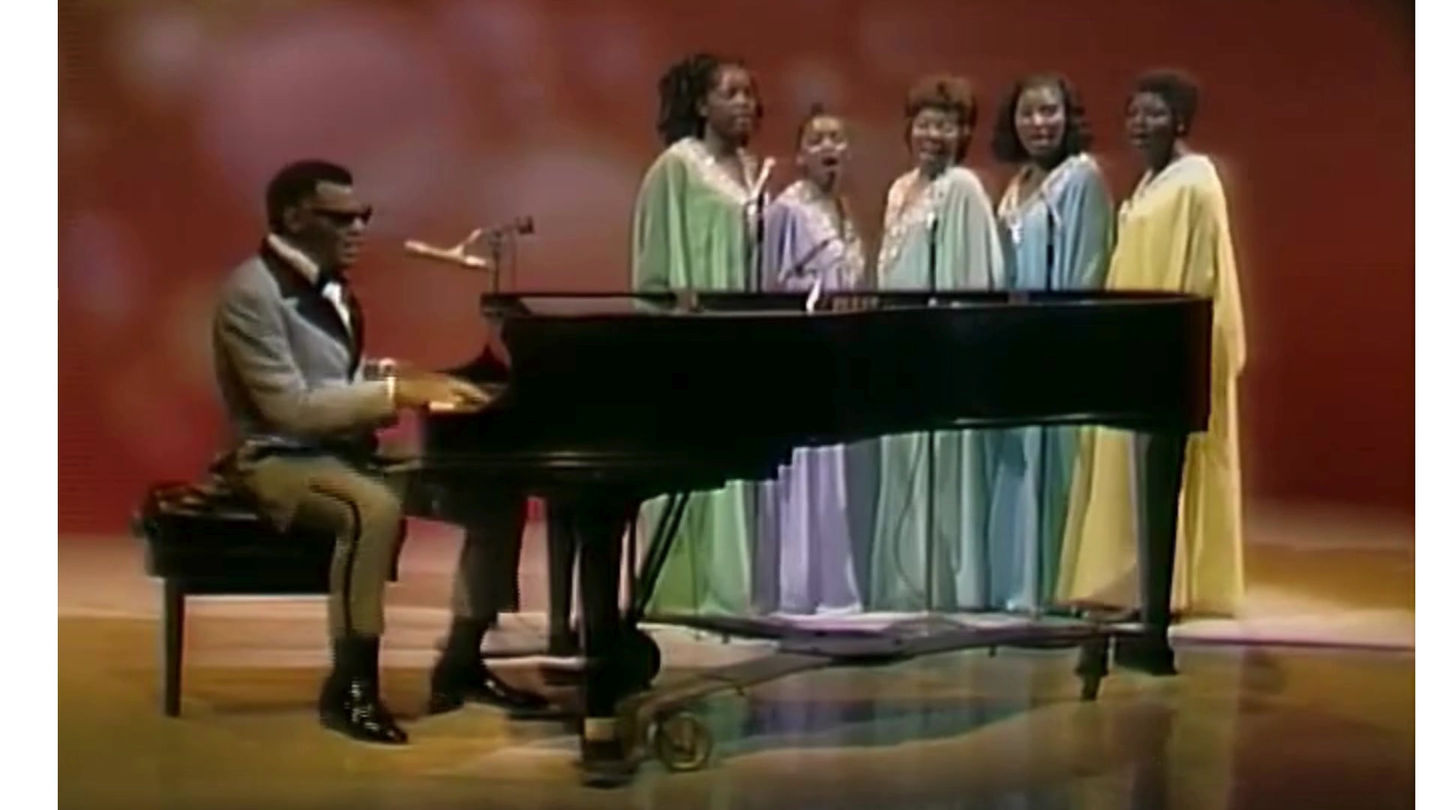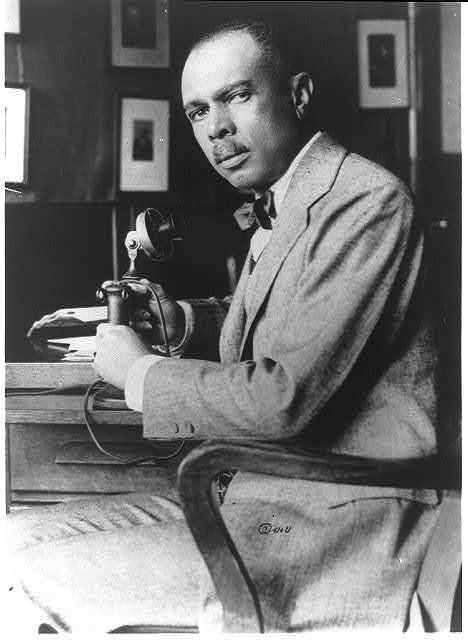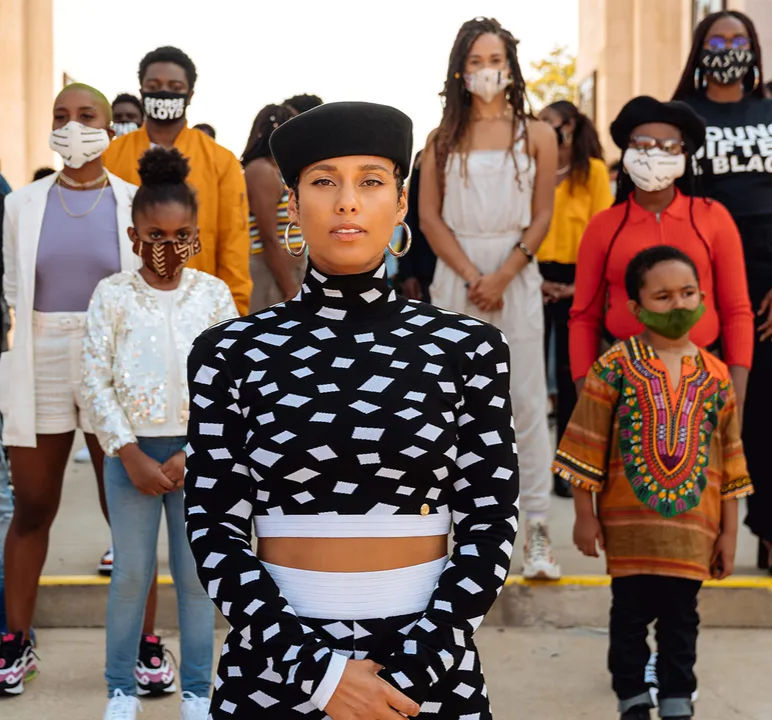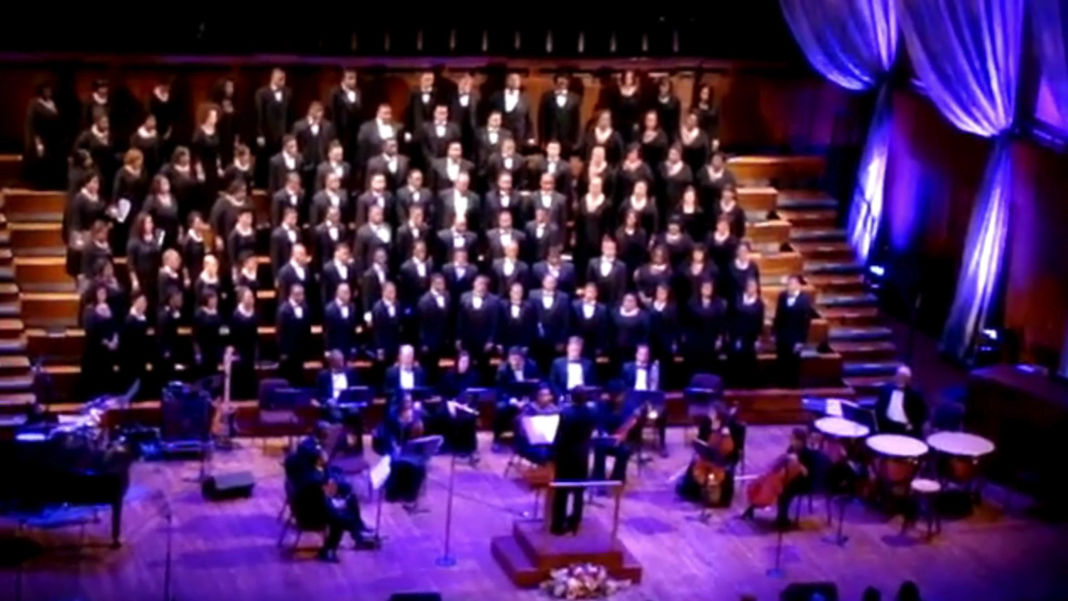James Weldon Johnson Foundation
“LIFT EVERY VOICE AND SING”
A Timeless Hymn of Hope and Unity
A National Treasure
“Lift Every Voice and Sing” is the popular name for Johnson’s “National Hymn.” In the Library of Congress, a copyright on “Oct 19, 1900” reveals “Lift Every Voice and Sing” in quotations under the header “National Hymn for the Colored People of America.” “Lift Every Voice and Sing” is a song of profound cultural and historical significance.
Written in 1899 by James Weldon Johnson (lyrics) and J. Rosamond Johnson (music), it was first performed in Jacksonville, Florida on February 12, 1900, as a tribute to President Abraham Lincoln. Since then, it has grown into a powerful anthem of unity and resilience, deeply rooted in the American experience and the ongoing struggle for justice, life, liberty and the pursuit of happiness..
This enduring hymn captures the best of American culture through great art, harmony, melody, and lyrics. Sung in churches, schools, and at pivotal moments in the Civil Rights Movement, its stirring verses continue to inspire and uplift. “Lift Every Voice and Sing” is more than a song; it is a national treasure that reminds us of the unbreakable spirit of a people and the collective pursuit of equality and freedom.


The Origins
In February 1900, a group of young men in Jacksonville, Florida, organized a celebration of President Abraham Lincoln’s birthday. Recognizing the importance of the occasion, James Weldon Johnson, then the principal of Stanton School, and his brother J. Rosamond Johnson decided to compose a song for the event. James wrote the heartfelt lyrics, and J. Rosamond, a classically trained composer, created the music.
Performed by a choir of 500 schoolchildren, “Lift Every Voice and Sing” debuted as a stirring tribute to Lincoln’s legacy. The song’s emotional depth and universal message immediately resonated with the audience. Although the Johnson brothers moved to New York shortly after, the children of Jacksonville carried the song with them to schools, churches, and communities, ensuring its steady spread across the South.
Within two decades, the song was widely recognized as the “Negro National Hymn,” a title reflecting the striving of all people and the faith of citizens in a nation even in the face of America's systemic injustice.

“A group of young men in Jacksonville, Florida, arranged to celebrate Lincoln's birthday in 1900. My brother, J. Rosamond Johnson, and I decided to write a song to be sung at the exercise. I wrote the words and he wrote the music. Our New York publisher, Edward B. Marks, made mimeographed copies for us and the song was taught to and sung by a chorus of five hundred colored school children.
Shortly afterwards my brother and I moved from Jacksonville to New York, and the song passed out of our minds. But the school children of Jacksonville kept singing it, they went off to other schools and sang it, they became teachers and taught it to other children. Within twenty years it was being sung over the South and in some other parts of the country. Today, the song, popularly known as the Negro National Hymn, is quite generally used.”
Cultural and Historical Significance
A Unifying Force in Black Churches
From its earliest days, “Lift Every Voice and Sing” became a cornerstone of Black worship services, where its spiritual resonance made it a powerful tool for expressing collective hope and unity. Sung at community gatherings, graduations, and religious ceremonies, it became a symbol of faith and perseverance.
Civil Rights Movement Anthem
During the Civil Rights Movement of the 1950s and 1960s, the hymn emerged as a rallying cry for justice. Leaders like Dr. Martin Luther King Jr. and organizations like the NAACP incorporated the song into marches, protests, and speeches, using it to inspire solidarity and courage.

at%20The%20G.jpeg)
Schomburg Center for Research in Black Culture, Photographs and Prints Division, The New York Public Library. "Dr. Martin Luther King, Jr, Mrs. Rosa Parks, and David Boston (Parade Marshall)at The Great Freedom March Rally, Cobo Hall" New York Public Library Digital Collections.
Artistic Interpretations
The hymn has inspired generations of artists and performers, with notable renditions by:





A Source of Inspiration
“Lift Every Voice and Sing” has transcended its origins to become a symbol of resilience and progress. It has inspired countless artists, activists, and educators while maintaining its role as a spiritual and cultural anchor for all Americans. Whether performed in churches, at civil rights rallies, or on global stages, its message remains timeless.

“22c James Weldon Johnson single,” National Postal Museum. Copyright United States Postal Service. All rights reserved. 1988.
“Lift Every Voice and Sing”
The Lyrics
Lift every voice and sing,
Till earth and heaven ring,
Ring with the harmonies of Liberty;
Let our rejoicing rise
High as the list'ning skies,
Let it resound loud as the rolling sea.
Sing a song full of the faith that the dark past has taught us,
Sing a song full of the hope that the present has brought us; Facing the rising sun of our new day begun,
Let us march on till victory is won.
Stony the road we trod, Bitter the chast'ning rod,
Felt in the days when hope unborn had died;
Yet with a steady beat, Have not our weary feet
Come to the place for which our fathers sighed?
We have come over a way that with tears has been watered.
We have come, treading our path through the blood of the slaughtered, Out from the gloomy past,
Till now we stand at last
Where the white gleam of our bright star is cast.
God of our weary years,
God of our silent tears,
Thou who hast brought us thus far on the way;
Thou who hast by Thy might,
Led us into the light,
Keep us forever in the path, we pray.
Lest our feet stray from the places, our God, here we met Thee,
Lest, our hearts, drunk with the wine of the world, we forget Thee;
Shadowed beneath Thy hand,
May we forever stand,
True to our God,
True to our native land.

WHAT OTHERS HAVE TO SAY
“Lift Every Voice and Sing” in the NFL
In recent years, the National Football League (NFL) has embraced “Lift Every Voice and Sing” as part of its efforts to help “to bring unity to a nation in need of healing.”
The NFL announced the song would be played before every Week 1 game to recognize the ongoing fight for racial equality.
2020 Season

Since 2021, the hymn has been featured in pre-game ceremonies at the Super Bowl, with performances by artists like Alicia Keys, Mary Mary, and Sheryl Lee Ralph.
Super Bowl Performances

The NFL continues to feature the song in major events, showcasing its significance in promoting unity.
2024 and Beyond


Celebrating the 125th Anniversary!
Ledisi will perform “Lift Every Voice and Sing” at the 2025 Super Bowl LIX with 125 singers in a choir of high school students from New Orleans to celebrate the 125th anniversary of the hymn and to recognize the first five hundred students who performed the song on February 12, 1900 in Jacksonville, FL.

Imani Perry
Harvard Professor and Musicologist, May We Forever Stand: A History of the Black National Anthem, The John Hope Franklin Series in African American History and Culture, February 2018
“‘Lift Every Voice and Sing’ moved with social history, but it also always stands as a sign of a particular racial identity and culture. Even as it was embraced by widely divergent political actors, some aspects of its meaning were and are resilient. It tells the singer to see herself or himself as emerging magnificently through struggle. It nurtures an identity rooted in community. It is a song that moves regionally and internationally, yet holds fast to a sense of particular belonging. It has had a remarkable longevity due to both its beauty and vision.”

Janelle Harris Dixon
“Why the Black National Anthem Is Lifting Every Voice to Sing,” Smithsonian Magazine, August 10, 2020.
“The prestige of “Lift Every Voice and Sing” has become part of its legacy, not just for its distinguished lyrics but for the way it makes people feel. It inspired legendary artist Augusta Savage to create her 16-foot sculpture “Lift Every Voice and Sing (The Harp)” for the 1939 New York World’s Fair. Black servicemen on the frontlines of World War II sang it together, as have civil rights demonstrators in every decade... It’s been recorded by Weston, Ray Charles, Aretha Franklin, Stevie Wonder, and across all genres—jazz, classical, gospel, opera and R&B.”

Troy Vincent
Executive Vice President of Football Operations, NFL
“It has encouraged generations of Black people that God will lead us to the promises of life, liberty and the pursuit of happiness. It’s as pertinent in today’s environment as it was when it was written.”

Derrick Johnson
CEO NAACP
“It spoke to the history of the journey of African-Americans and for many Africans in the diaspora [who] struggled through to get to a place of hope.”

Dr. Timothy Askew
Professor Atlanta Clark University
“‘Lift Every Voice and Sing’ has been sung by Mormons, Southern white folks and congregations around the world, appearing in more than 30 church hymnals. Rabbi Stephen Wise of the Free Synagogue in New York wrote to the Johnson brothers in 1928, calling the hymn the ‘noblest anthem I have ever heard.’”

Curator of Music and Performing Arts, Smithsonian's National Museum of African American History and Culture
“Equal parts honoring the painful past and articulating optimism for the future, the hymn may be Johnson’s most well-known contribution because its lyrics remain relevant to where we are as a country in any era.”

Dr. Timothy Askew
Professor Atlanta Clark University
“A Black National Anthem is amazing. It is. But the song is an anthem of universal uplift. It's a song that speaks to every group that struggles. When you think of the words “lift every voice,” of course as a Black person, I see the struggles of Black people. But I also see the struggles of Native Americans. I see the struggles of Chinese Americans. I see the struggles of women. I see the struggles of gays and lesbians. I see the struggles of Jews. I see the struggles of the human condition. And I have to talk about that.”

Kim Weston
American Soul Singer
“I’ve been singing ‘Lift Every Voice and Sing’ since I was five years old. I learned it in kindergarten—we sang it every day. So that performance was a beautiful moment of solidarity.”

Rufus E. Jones, Jr.
Co-founder and President of the James Weldon Johnson Foundation, “4 Things You Didn’t Know About "Lift Every Voice and Sing,” Whitney Roberts, February 23, 2023
“This was Johnson’s vehicle for equality…Black folks were singing this song 30 years before the Star Spangled Banner became the National Anthem. Even after post-reconstruction, even after Jim Crow and lynchings. Even after all of those forms of oppression. Listen to the harmonies of “Lift Every Voice and Sing,” the music, the lyrics. That is why it has endured for 123 years. And it’s only getting stronger. It’s Black Excellence.”

Juan Benn Jr.
“Lift Every Voice and Sing: The Black National Anthem Born from a Birthday Party,” BBC, June 19, 2023
“Lift Every Voice and Sing reached all corners of the nation and beyond. The National Association for the Advancement of Colored People (NAACP) declared the song the "Negro National Anthem" in 1919, one year before James was chosen as the organisation's first black executive secretary and 12 years before the Star-Spangled Banner was adopted as the US national anthem.”

James Weldon Johnson. Yale Collection of American Literature, Beinecke Rare Book and Manuscript Library.
“The lines of this song repay me in elation, almost of exquisite anguish, whenever I hear them sung by Negro children.”
—James Weldon Johnson, 1935
Notable Performances
“Lift Every Voice and Sing,” has been performed at numerous significant events throughout history.
February 12, 1900
First performed by 500 schoolchildren at the Stanton School in Jacksonville, Florida, to celebrate President Abraham Lincoln's birthday.
1919
Bloody Summer of 1919 where there were race riots across 25 cities across the United States. The anthem is adopted by the NAACP as the Negro National Anthem.
1939
Inspired by the hymn, sculptor Augusta Savage created a 16-foot sculpture titled "Lift Every Voice and Sing" (also known as "The Harp") for the New York World's Fair.
World War II Era
Sung by segregated Black soldiers as an act of patriotism and protest.
1950s and 1960s
Adopted by the Civil Rights Movement, performed at various rallies and events.
2009
Performed at the inauguration of President Barack Obama.
2018
Beyoncé included the song in her Coachella performance, bringing it to a global audience.
2020
John Legend performed the song during Morehouse School of Medicine's virtual commencement exercises.
2021
Alicia Keys performed the song in a pre-recorded video before Super Bowl LV.
2022
Gospel duo Mary Mary performed the hymn from outside SoFi Stadium at Super Bowl LVI.
2023
Sheryl Lee Ralph delivered an on-field performance of the song before Super Bowl LVII, marking the first time it was performed live on the field at the Super Bowl.
2024
Singer Andra Day performed "Lift Every Voice and Sing" at the start of Super Bowl LVIII.
2025*
Grammy-winning artist Ledisi is scheduled to perform the hymn during the pregame ceremonies of Super Bowl LIX at Caesars Superdome in New Orleans with 125 singers in a choir of high school students to celebrate the 125th anniversary of the hymn originally “sung by schoolchildren–a chorus of five hundred voices” on February 12, 1900.































